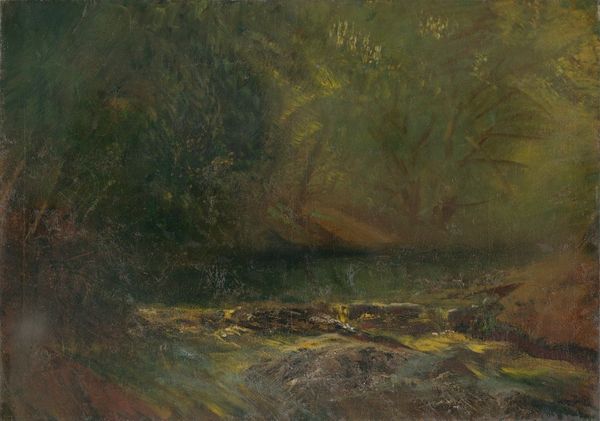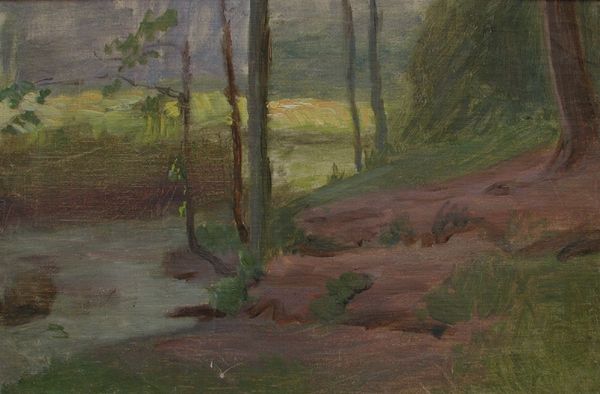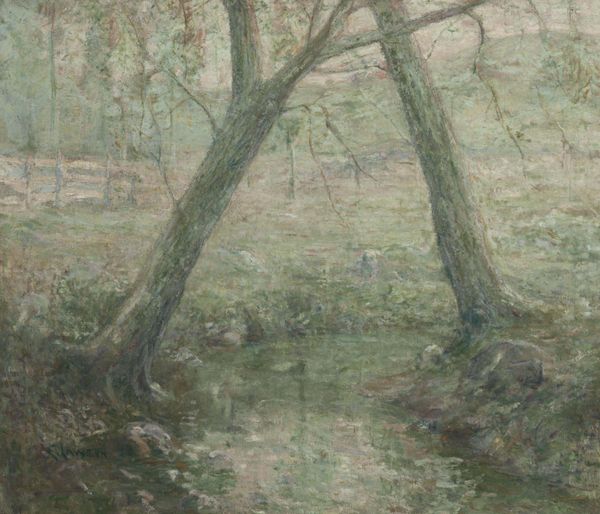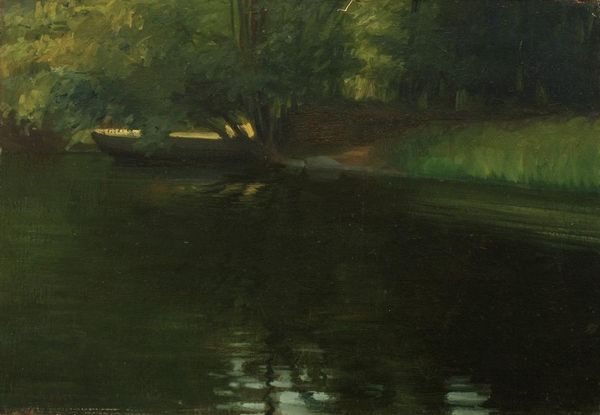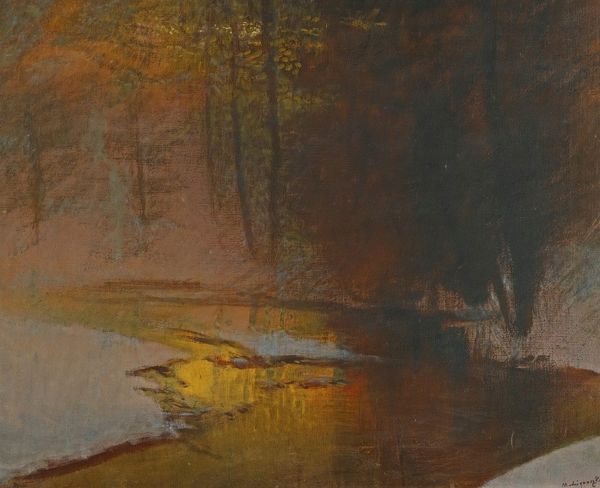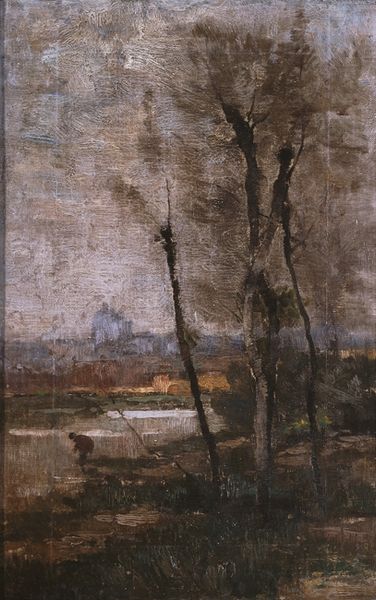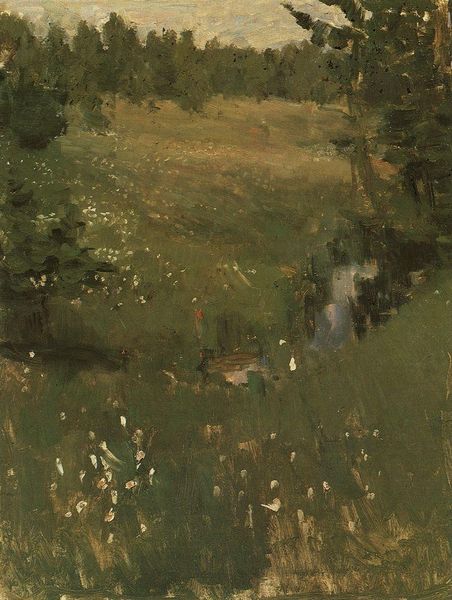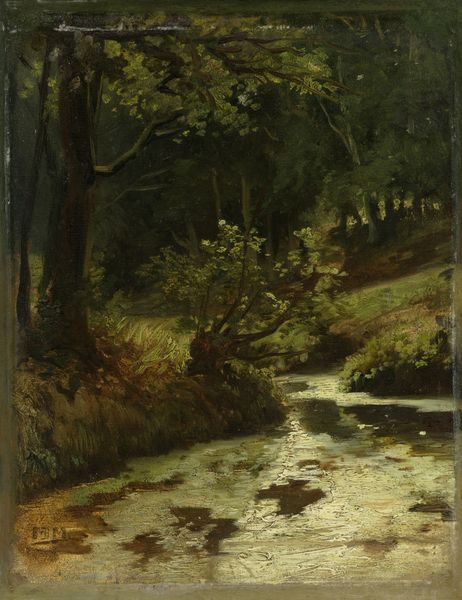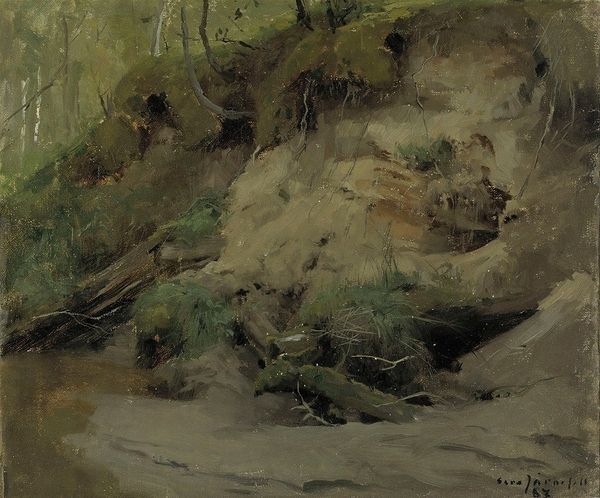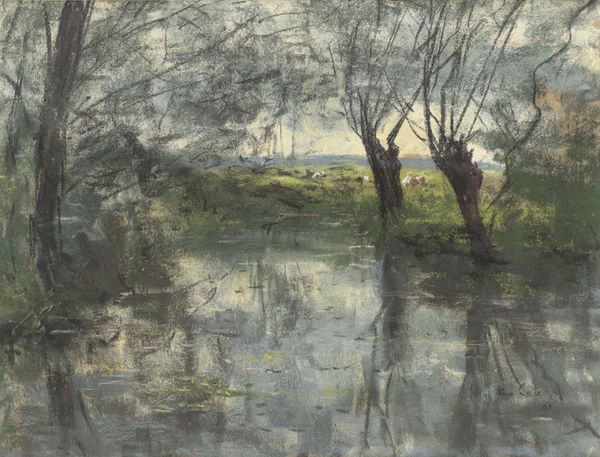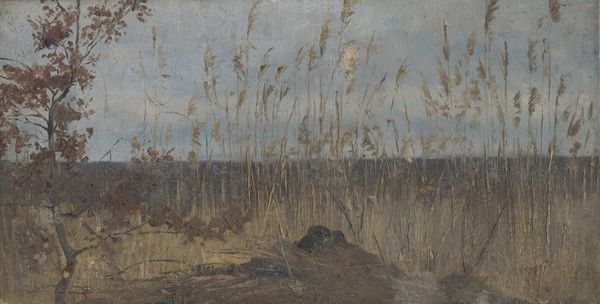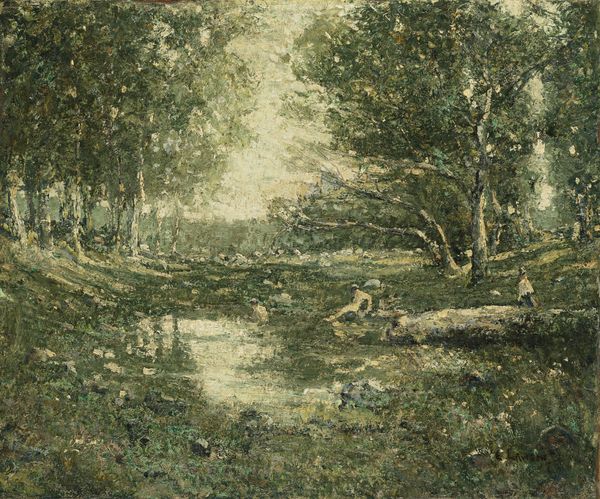
plein-air, oil-paint, impasto
#
plein-air
#
oil-paint
#
landscape
#
oil painting
#
impasto
#
romanticism
#
watercolor
Copyright: Public Domain: Artvee
Editor: Here we have John Constable’s "Rushes by a Pool", dating from around 1821, rendered in oil paint, possibly en plein air. It feels quite intimate and subdued; the muted colors really draw you in. How do you interpret this work? Curator: Constable’s intense focus on the natural world moves beyond a simple picturesque scene, reflecting Romanticism's turn towards emotional experience. This was happening during immense shifts in land ownership and the industrial revolution; could this painting be a quiet act of resistance? A statement reclaiming the inherent beauty and worth of undisturbed nature, resisting its exploitation? Editor: I hadn't considered it that way, as resistance. It just seemed like a peaceful little painting. But placing it against that backdrop… it makes you think. Was Constable actively involved in those kinds of discussions? Curator: He wasn't overtly political in the way, say, Delacroix was. But consider the context: the Enclosure Acts, the growing disparity between wealthy landowners and rural communities. What does it mean to paint this scene, to draw attention to the small-scale beauty being erased, at this specific moment in history? And who is it for? Who had the privilege to contemplate it? Editor: So you’re suggesting the very act of depicting this scene is a political one, framing the conversation of who controls and accesses land? Curator: Exactly. Landscape painting, seemingly neutral, often reinforces specific power structures and ideologies. We can ask who is being represented, and who is being left out? Where are the people? What voices are silenced by this idyllic image? Editor: This has really opened my eyes to a whole other level of reading landscape paintings. Curator: Indeed, the canvas whispers stories beyond its visible surface.
Comments
No comments
Be the first to comment and join the conversation on the ultimate creative platform.
